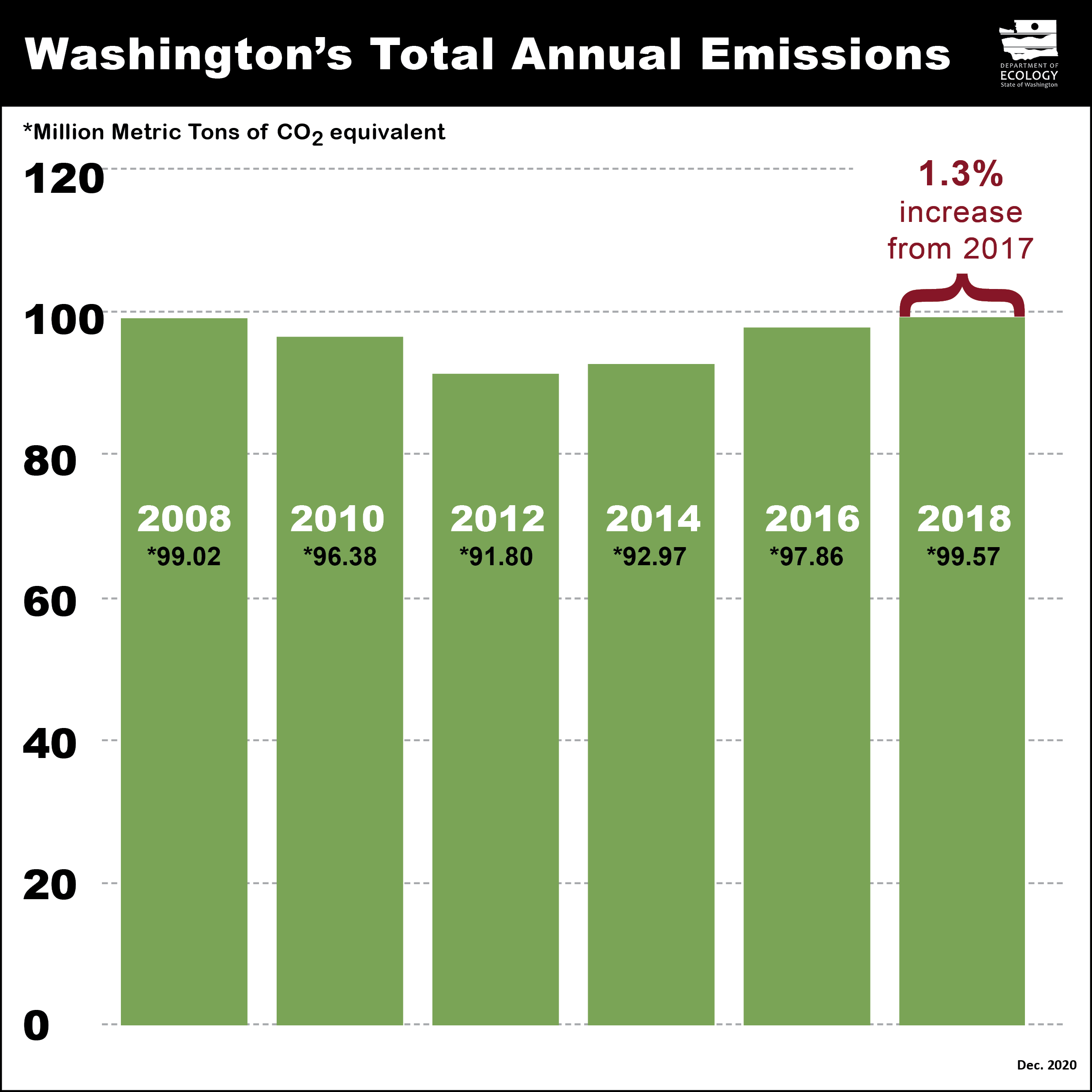New data on greenhouse gas emissions in Washington show that emissions rose 1.3% in 2018 to reach 99.6 million metric tons of carbon dioxide equivalent. The Washington Department of Ecology data show that increases in emissions tied to our state’s growing economy, such as those coming from transportation, offset reductions in carbon pollution from generating electricity.
The 1.3% increase, although small, is another sign that Washington must do more to reduce the carbon pollution that is driving climate change and meet the greenhouse gas emissions limits set in state law.
“It’s clear that we’ve got our work cut out for us,” said Laura Watson, Ecology’s director. “We cannot wait any longer to take significant steps to cut carbon pollution and protect our state from climate change.”
The best news in the 2018 data comes from electricity generation, which shrank 2.5% from 2017, a decline in part driven by utilities ramping up their investments in renewable energy like wind and solar. The electricity sector will continue to shrink in the years ahead under a 2019 state law, which requires utilities to stop using coal power by 2025, to be mostly carbon free by 2030, and to provide entirely clean or carbon-free electricity by 2045.
In 2018, though, the good news in electricity could not make up for increases in the biggest category of emissions in Washington: transportation. Emissions from cars, trucks, delivery vehicles and airplanes grew 3.3% in 2018, climbing to 44.7 million metric tons.
Washington’s carbon reduction efforts
In recent years, Gov. Jay Inslee and the Washington Legislature have made aggressive efforts to secure new policies to reduce greenhouse gas emissions, including committing to clean electricity, raising standards for building energy efficiency, and expanding the use of zero-emission vehicles.
The impact of these new policies can’t be seen in the 2018 emissions data released today. However, projections from the Rhodium Group, a national research firm experienced at evaluating energy and climate policies, found that by 2030, greenhouse gas emissions in Washington will drop by as much as 25%, based on existing policies.
History of greenhouse gas emissions in Washington
Historically, carbon emissions in Washington peaked 20 years ago at more than 108 million metric tons. Emissions fell sharply during the Great Recession and have since climbed slowly back: 2018’s 99.6 million metric tons was the state’s highest figure since 2007, when total emissions topped 100 million metric tons – and Washington’s population was 900,000 people lower.
Washington’s emission limits
With 2020 behind us, Ecology will begin collecting data to determine whether Washington met the legislative emissions limit of 90.5 million metric tons, the same as statewide emissions were in 1990. Even if the state meets the 2020 limit, Washington will need to make deep cuts in greenhouse gas emissions to reach the future limits set by the Legislature:
- 2030 – Total emissions of 50 million metric tons of carbon dioxide equivalent
- 2040 – Total emissions of 27 million metric tons
- 2050 – Total emissions of 5 million metric tons – and offset all remaining emissions.
The limits were based on scientific recommendations on what cuts are needed to prevent the worst effects of climate change on our state’s coastlines, water supplies, forests, environment and economy.


